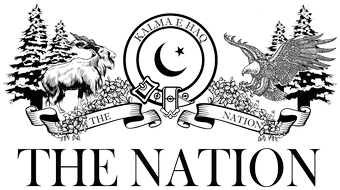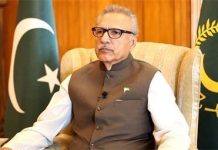مضمون کا ماخذ : Xổ số miền Nam thứ Ba
Dollar crosses Rs200 in open market
The Pakistani rupee surpassed the anticipated level of Rs200 in the open market against the US dollar after shedding Rs2.5 on Wednesday. Meanwhile, in the interbank market, the local currency continued to be on a slippery slope, and with a fresh decline of Rs3.87, or 1.34% in a single day, it plunged to yet another […]
The Pakistani rupee surpassed the anticipated level of Rs200 in the open market against the US dollar after shedding Rs2.5 on Wednesday. Meanwhile, in the interbank market, the local currency continued to be on a slippery slope, and with a fresh decline of Rs3.87, or 1.34% in a single day, it plunged to yet another historic low of Rs198.39 against the greenback despite suspected intervention from the central bank.
The rupee was trading at a new all-time low at Rs199 at 2:46pm against the greenback during intraday trade, compared to Tuesday’s close of Rs195.74.
The domestic currency has maintained the downturn on the ninth consecutive working day, as it cumulatively lost 6.83% or Rs12.7.
The currency hit a record low of Rs188.66 on April 10. It then plunged to Rs190.90 on April 11, fell over Rs192 on April 12, reached Rs193.10 on April 13, sank below Rs194 on April 16 and down to Rs196 yesterday (April 17).
The recent decline came as Pakistan resumed talks with the International Monetary Fund (IMF) in Doha on Wednesday for the revival of the stalled multibillion-dollar loan programme.
Investors are concerned as there is speculation in the market that the IMF may not agree to resume the loan programme following the government’s reluctance to implement the prerequisite conditions.
The market is also waiting for the outcome of the meetings held between Prime Minister Shehbaz Sharif and his coalition partners.
Analysts believe the rupee is gradually heading towards exceeding the Rs200-mark in the interbank market in the days to come if the government doesn’t take immediate action to bring economic and political stability to the country.
Since the beginning of this fiscal year (July 1, 2021) to date, the rupee has collectively dropped by a massive 25.92% (or Rs40.85) compared to the previous fiscal year’s close at Rs157.54.
The rupee has maintained a downward trend for the last 13 months. It has lost 30.28% (or Rs46.12) to date, compared to the record high of Rs152.27 recorded in May 2021.
A day earlier, AA Commodities Director Adnan Agar told a local news channel, “The situation is likely to remain uncertain for the local currency.”
“If the government decides to remove subsidies on petroleum products, the rupee will bounce back,” he said, adding that the local unit will remain within the range of 180-185.
Agar, however, mentioned that if the government decided to dissolve the assembly and move towards an early election, the situation for the already tumbling currency market would deteriorate.
Regarding the IMF talks, the analyst said that if the government announced early polls, the IMF programme will be stalled or if the government decided to maintain the subsidy on petroleum products against the IMF conditions, the currency will slump further.
Agar maintained that even if the currency appreciates in the near run on the back of the decision taken by the coalition government, by the end of the fiscal year 2022-23 the rupee will slowly and gradually crawl back to the current levels because of the widening current account deficit, which is one of the major issues of Pakistan.
Sharing similar views, other currency dealers said the government’s reluctance to withdraw the subsidies as agreed to with the IMF had worsened the situation.
With the dollar rising to uncharted heights, stakeholders warn that a weakening rupee could open up Pakistanis to a second round of inflationary impact, which will hit the lower and middle classes the hardest.
Experts believe that while no sector of the economy would be immune to the fallout from the rupee’s steep devaluation, key areas such as debt servicing and imports for industry and food items will be among the first to be affected.
According to Lucky Motor Corporation Limited Chief Executive Officer Asif Rizvi, an increase in the dollar’s value will also lead to a rise in the prices of vehicles and hence, car sales would be severely affected in the future.
Car sales numbers had been showing an impressive growth, but “new bookings are facing a sharp decline after the huge hike in interest rates and rising vehicle prices,” he said, adding that auto financing may reach zero in the coming months.









